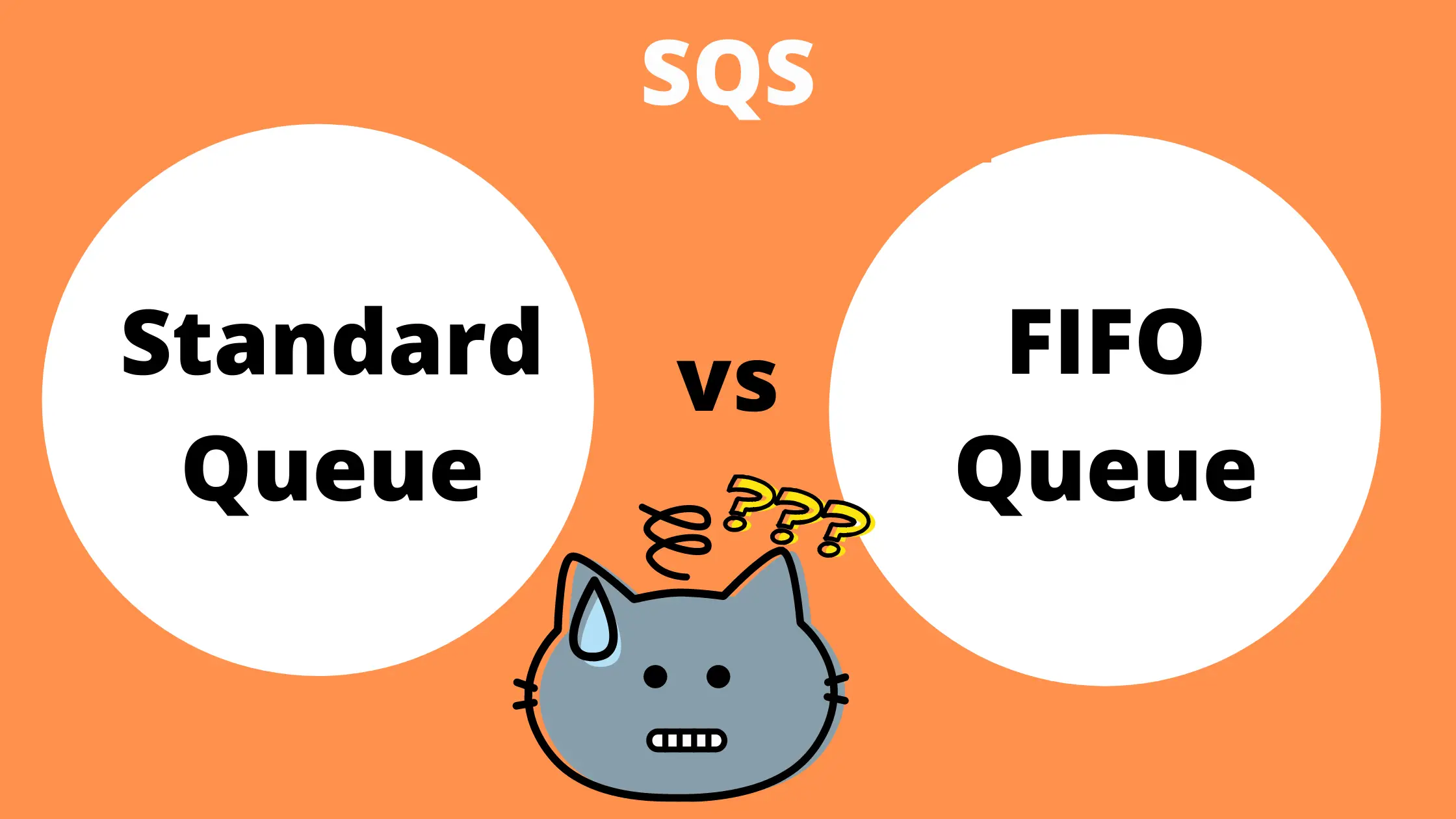Amazon SQS Standard vs FIFO Queue
Dear Reader, In this post, I will be sharing with you the important differences between the AWS SQS standard and the FIFO queue.
This will help you understand both the queue and also help you choose the correct one for your use case.
Don’t want to miss any posts from us? join us on our Facebook group, and follow us on Facebook, Twitter, LinkedIn, and Instagram. You can also subscribe to our newsletter below to not miss any updates from us.
What is SQS?
Amazon SQS or Simple Queue Service is a fully managed message queue Service provided by AWS.
In the world of microservices architecture, Amazon SQS helps you decouple your application components so that they can work and fail independently.

Suggested Read: Things to Know about SQS Dead Letter Queue
Features
- Frees you from managing your own message queuing system
- You can send, receive and store messages between components
- Increases the fault tolerance of your application.
- You can share sensitive data between components using encryption
- Scales efficiently as your application grows
SQS Provides two types of Message Queue
- Standard Queue
- FIFO Queue
Let’s define both of them first and then understand the differences based on multiple parameters.
- Message Ordering
- Delivery
- Throughput
- Use cases
Definition
| Standard Queue | FIFO Queue |
| It’s the default queue type offered by AWS SQS. This provides unlimited throughput, best-effort ordering and at least once message delivery. | FIFO means first in first out. This simply means that messages will be ordered in the queue and the first message to arrive in the queue will be the first to leave the queue. |
Now, when we defined them, let’s evaluate them on various parameters that we specified earlier in this post.
Message Ordering: SQS Standard vs FIFO Queue
SQS Standard queues provide best-effort ordering. In other words, It tries its best to deliver a message in the same order as they are sent.
However, occasionally more than one copy of a message might be delivered out of order
FIFO queues, on the other hand, offer first-in-first-out delivery. The order in which messages are sent and received is strictly preserved as you can see below.

Delivery: SQS Standard vs FIFO Queue
- Standard Queue grantees at least once delivery but sometimes duplicates or more than one copy of a message can be delivered.
- FIFO queues ensure a message is delivered exactly once and remains available until a consumer process and deletes it. duplicates are not introduced into the queue
Throughput: SQS Standard vs FIFO Queue
- Standard queues offer unlimited throughput. In other words, it supports a nearly-unlimited number of transactions per second per API call.
- FIFO queues on the other hand are limited to 300 transactions per second per API action without batching and 3000 messages with batching(When you batch 10 messages(max) per operation)
Use cases: SQS Standard vs FIFO Queue
- You can always use the Standard queue as long as you are able to process duplicates and out-of-order messages
- FIFO queues can be used when ordering messages is a must and duplicates are not accepted at any cost.
Conclusion:
In this post, we analysed SQS Standard vs FIFO Queue. let’s sum up what we learnt in this post.
- AWS SQS is a fully managed message queue service offered by AWS
- It provides two types of queues – Standard and FIFO
- Standard queue supports best-effort ordering, at least one delivery and nearly unlimited throughput.
- FIFO queue provides first in first out ordering and messages are delivered exactly once. It supports 300 transactions per second.
- At last, we saw the use cases of both the queue
- Based on these use cases you can select the right queue for your workload
I hope you found this post helpful.
Don’t forget to motivate me by-
- Adding a comment below on what you liked and what can be improved.
- Follow us on
- Subscribe to our newsletter to get notified each time we post new content
- Share this post with your friends
Suggested Read:
- Understand IAM PassRole to Secure your AWS Infrastructure
- How to Create S3 Bucket using CloudFomation
- Most Common types of Cyber Attacks in 2020
- Create DynamoDB table using CloudFormation
- Provision ACM certificate using CloudFormation
- Create SSM Parameter using CloudFormation
- Create API Gateway Custom Domain using CloudFormation
- Basics of Serverless Computing


4 thoughts on “Amazon SQS Standard vs FIFO Queue – How to Choose the right one !!!”
Great article and it’s simply straight and useful …
Keep Rocking ….
Thank you Srikanth 🙂
Well explained. Good Article….Keep going. I am also a blogger like you in aws. My blog is http://www.techyfella.com and I request you to take a look at my blog articles and provide your valuable comments.
Thanks Praveen for your valuable feedback, Sure Will Checkout